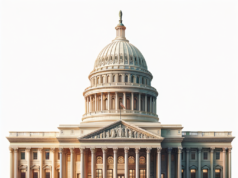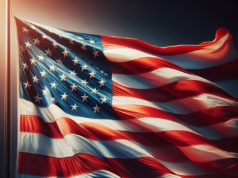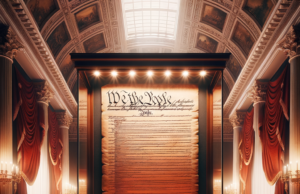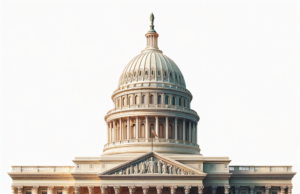Contents
- 1 Understanding the Historical Context of Gun Control in the United States
- 2 The Constitutional Framework: Second Amendment and Its Interpretations
- 3 Key Statistics: Analyzing Gun Violence and Ownership Trends in America
- 4 The Role of Advocacy Groups: NRA and Gun Control Organizations Explained
- 5 Public Opinion: Surveying American Attitudes Toward Gun Legislation
- 6 Potential Solutions: Exploring Compromise and Policy Alternatives in Gun Control

The gun control debate in the United States has become one of the most polarizing issues in contemporary society, reflecting deep-seated divisions that extend beyond mere policy disagreements. As gun violence continues to plague communities across the nation, the discourse surrounding gun ownership and regulation has intensified, prompting a closer examination of the historical, legal, and social factors that contribute to this contentious issue. This article seeks to unravel the tensions behind America’s deadly divide by exploring the historical context of gun control, the constitutional framework, statistical trends, the role of advocacy groups, public opinion, and potential solutions.
Understanding the Historical Context of Gun Control in the United States
The roots of gun control in the United States can be traced back to the colonial era, where firearms were essential for survival and self-defense. However, as the nation evolved, so did the perception of guns and their role in society. The early 20th century saw the introduction of various regulations aimed at curbing gun violence, particularly in response to the rise of organized crime during Prohibition. The Gun Control Act of 1968 marked a significant turning point, establishing a federal framework for gun regulation. Over the decades, high-profile incidents of gun violence, such as the assassinations of President John F. Kennedy and civil rights leader Martin Luther King Jr., further galvanized public opinion and led to the enactment of stricter laws. Despite these efforts, the debate has persisted, fueled by a complex interplay of cultural, political, and economic factors that continue to shape the national conversation on gun control.
The Constitutional Framework: Second Amendment and Its Interpretations
At the heart of the gun control debate lies the Second Amendment of the United States Constitution, which states, “the right of the people to keep and bear Arms, shall not be infringed.” This succinct yet powerful clause has been the subject of extensive legal interpretation and debate. Proponents of gun rights argue that the Second Amendment guarantees an individual’s right to own firearms for personal protection and recreational purposes. Conversely, advocates for gun control contend that the amendment was intended to ensure a well-regulated militia, emphasizing the need for government oversight in the regulation of firearms. Landmark Supreme Court cases, such as District of Columbia v. Heller (2008) and McDonald v. City of Chicago (2010), have further shaped the legal landscape, affirming an individual’s right to bear arms while also leaving room for reasonable regulations. This ongoing legal discourse underscores the complexity of balancing individual rights with public safety.
Key Statistics: Analyzing Gun Violence and Ownership Trends in America
The statistics surrounding gun violence and ownership in the United States are both alarming and revealing. According to the Centers for Disease Control and Prevention (CDC), over 45,000 gun-related deaths occurred in 2020 alone, with a significant portion attributed to suicides and homicides. Furthermore, the Pew Research Center reports that approximately 40% of American adults live in a household with a gun, highlighting the prevalence of firearm ownership in the country. Trends indicate a rising tide of gun purchases, particularly during times of social unrest and uncertainty, such as the COVID-19 pandemic and the Black Lives Matter protests. This surge in ownership has raised concerns among gun control advocates about the potential for increased gun violence, while gun rights supporters argue that responsible ownership can enhance personal safety. The stark realities of these statistics serve as a backdrop for the ongoing debate, illustrating the urgent need for effective solutions.
The Role of Advocacy Groups: NRA and Gun Control Organizations Explained
Advocacy groups play a pivotal role in shaping the gun control debate, with the National Rifle Association (NRA) being one of the most prominent organizations advocating for gun rights. Founded in 1871, the NRA has evolved into a powerful political force, lobbying against restrictive gun laws and promoting firearm education and safety. Its influence extends to grassroots mobilization, political endorsements, and substantial financial contributions to candidates who support pro-gun legislation. On the other side of the spectrum, organizations such as Everytown for Gun Safety and the Brady Campaign to Prevent Gun Violence advocate for stricter gun control measures, focusing on issues such as universal background checks, assault weapon bans, and red flag laws. These groups often engage in public awareness campaigns, research initiatives, and legislative advocacy to push for policy changes. The contrasting missions and strategies of these advocacy groups underscore the entrenched nature of the gun control debate, as each side seeks to mobilize public opinion and influence lawmakers.
Public Opinion: Surveying American Attitudes Toward Gun Legislation
Public opinion on gun control in the United States is complex and often divided along partisan lines. Recent surveys indicate that a significant majority of Americans support measures such as universal background checks and restrictions on high-capacity magazines. According to a Gallup poll conducted in 2021, approximately 57% of respondents favored stricter gun laws, while 33% opposed them. However, these numbers can vary significantly based on political affiliation, with Democrats generally advocating for more stringent regulations and Republicans emphasizing individual rights and personal responsibility. Additionally, regional differences play a crucial role, as urban areas tend to favor stricter laws compared to rural communities where gun ownership is often seen as a cultural norm. This divergence in attitudes reflects the broader societal tensions surrounding gun control, highlighting the challenges policymakers face in crafting legislation that resonates with a diverse electorate.
Potential Solutions: Exploring Compromise and Policy Alternatives in Gun Control
As the gun control debate continues to evolve, potential solutions must be explored to bridge the divide between opposing factions. Compromise measures, such as implementing universal background checks, could garner bipartisan support while addressing concerns about gun violence. Additionally, promoting responsible gun ownership through education and training programs may help mitigate risks associated with firearms. Some advocates suggest the adoption of red flag laws, which allow law enforcement to temporarily remove firearms from individuals deemed a threat to themselves or others, as a means of enhancing public safety without infringing on Second Amendment rights. Ultimately, fostering dialogue between stakeholders, including lawmakers, advocacy groups, and the public, is essential for developing effective policies that balance individual rights with the imperative of reducing gun violence.
The gun control debate in the United States is a multifaceted issue that reflects broader societal values and conflicts. Understanding the historical context, constitutional interpretations, statistical trends, and the roles of advocacy groups and public opinion is crucial for navigating this complex landscape. As the nation grapples with the realities of gun violence, the search for viable solutions remains paramount. By fostering constructive dialogue and exploring compromise, there is hope for a future where both the rights of individuals and the safety of communities can be upheld.

























